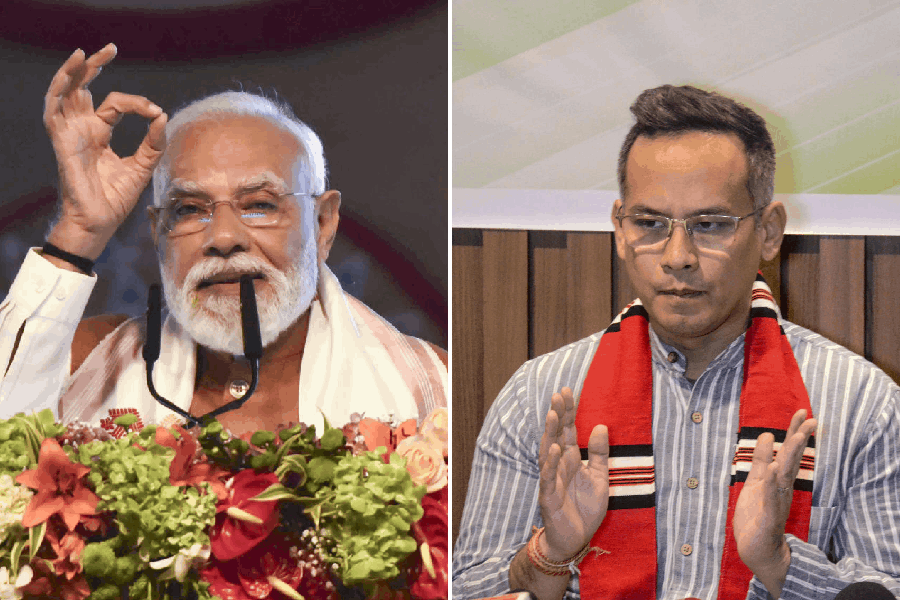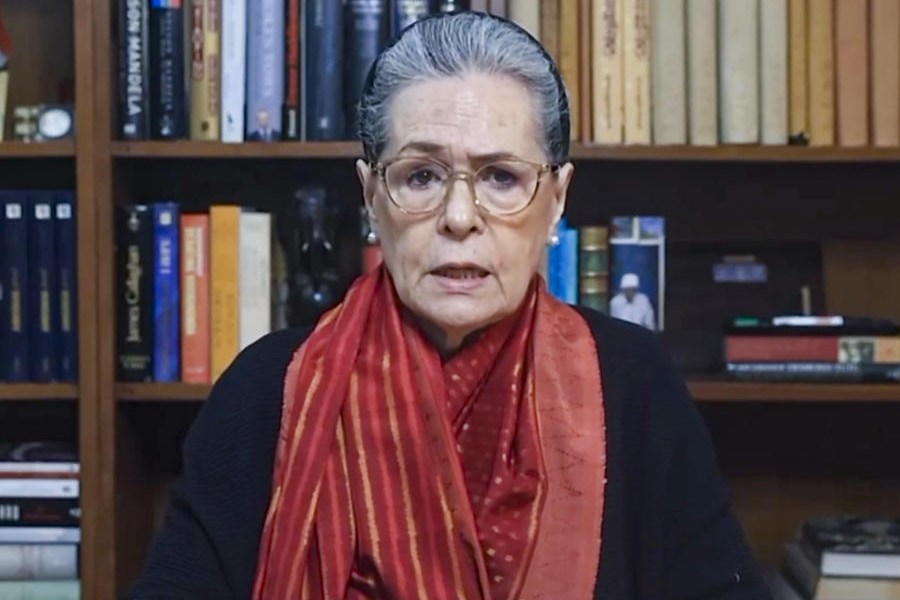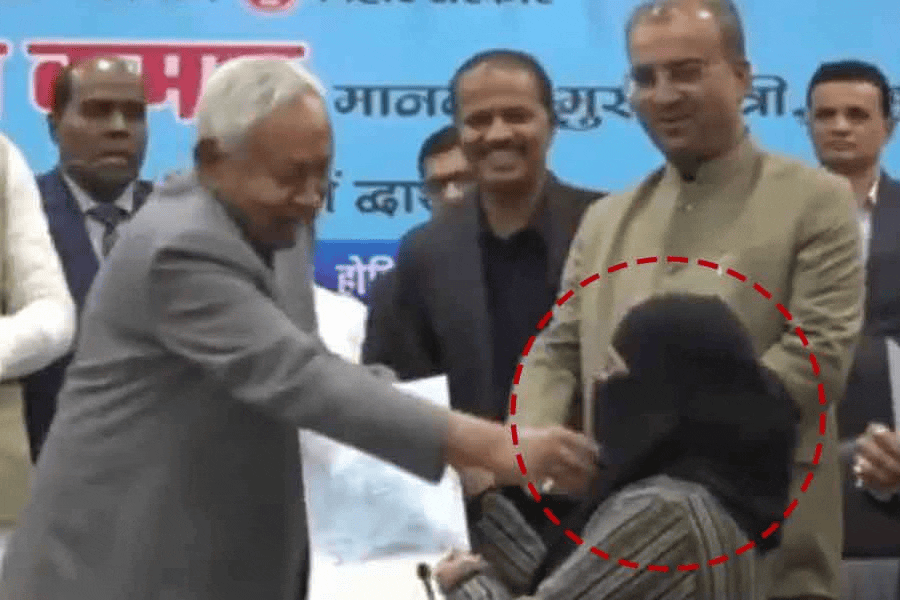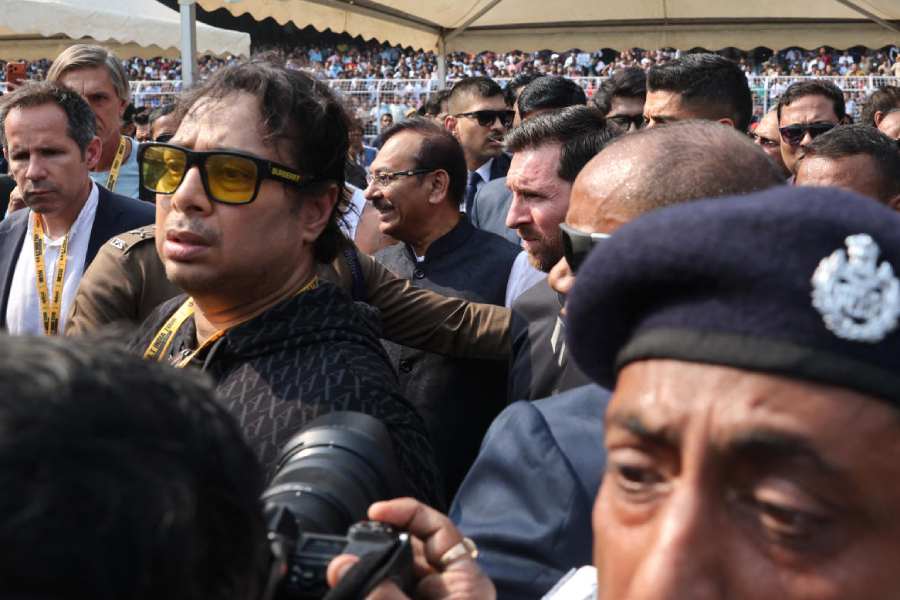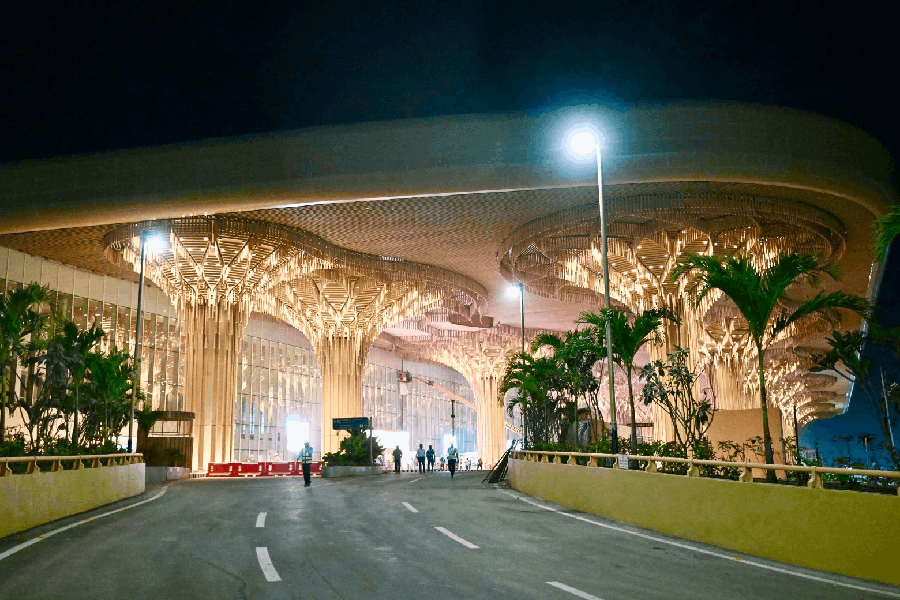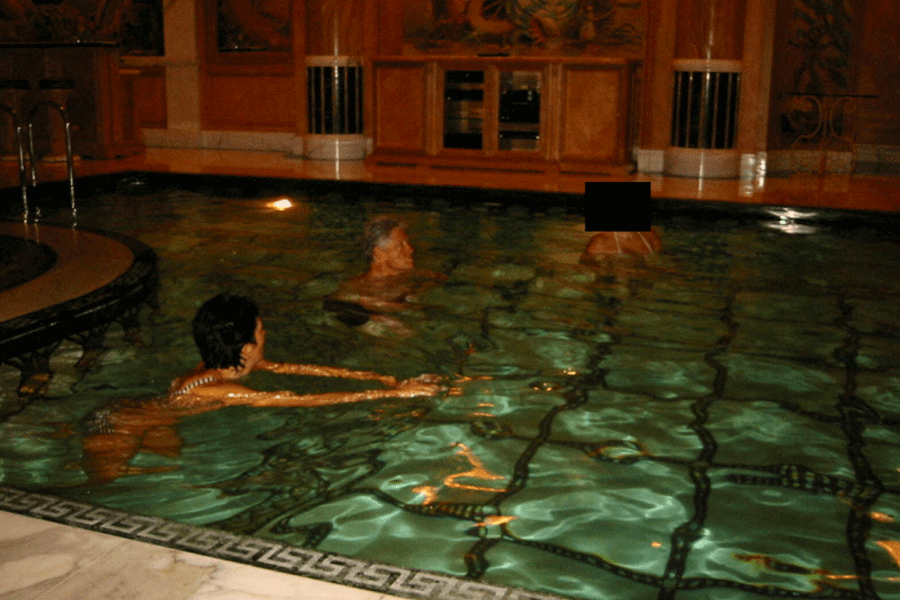 |
 |
 |
 |
 |
| (From top) A foreigner couple taking a close up of an olive Riddley turtle, turtles on the mass nesting ground at Gahirmatha, mangrove forest, birds resting at Bagagahana, Local fishermen ride a country boat insidea creek.Pictures by Sanjib Mukherjee |
Bhubaneswar, Sept. 26: Peace and quiet, lots of greenery, the sea and wildlife. Look no further than Bhitarkanika National Park if you want to experience all these delights together.
Visitors can experience the sea, creeks, wildlife and mangrove in the park’s ecologically rich environment.
While winter sees thousands of migratory birds visiting the forest, monsoon is the breeding season for a number of birds like herons, egrets and storks, which make their nests in the place called “Bagagahana”. Nature-lovers can also enjoy watching crocodiles, crabs and various other amphibious creatures that inhabit the mangroves.
“You can sight mass nesting of Olive Ridley turtles between November and April on the Gahirmatha beach (the area between Dhamara mouth and Barunei confluence). Gahirmatha (deep sea face) is so named because the continental shelf is really deep here and the beach is one of the largest rookeries (mass nesting ground) for these sea turtles in the world. During the time they spend on this beach, they mate, lay eggs and the baby turtles hatch. According to an observation spanning over a period of one-and-a-half decades, we can say that the Olive Ridleys find this beach one of the safest places to nest, mate and reproduce,” said divisional forest officer (DFO), Rajnagar, Manoj Mohapatra.
“Many people, even those from Orissa, do not realise that Bhitarkanika has so many things to offer and this ignorance till date, actually makes it one of the best-conserved mangrove ecosystem in the entire world. A nature traveller should not come here only with the hope to see a crocodile or sea turtles, but to experience the entire ecosystem. The entire region is a treasure trove of eco-education.”
In Bhitarkanika, a traveller can see the process of soil formation from the confluence of tidal and sweet water and how, through a simple natural precipitation, the particles are deposited on the ground. The movement of small and big spiders, crabs, mud-skippers, nesting of birds, their cracking sounds, the nature of their gait in the muddy soil along the creeks, fireflies, deer groups out in the evening, the movement of tidal water in the creeks and the music-like sound while they recede, the charm of pure air surrounded by the lush green mangrove vegetation and the simple course of tidal process would attract any nature-lover, he said.
“A visit without even a camera can provide a better experience as one can see more naturally than through the lens all the time. Small groups are encouraged because silence is needed for observing animals inside the national park either in country or mechanised boats. You should not also demand more luxury and have the mentality to stay in the solar-powered accommodations in Dangamal (for 34 persons), Gupti (six persons) and tented accommodation for eight on Ekakulanasi beach (only between November and February),” Mohapatra said.
Apart from the animals, birds, reptiles and vegetative collections, Bhitarkanika has one of the most beautiful river mouth systems created out of the confluence of Brahmani and Baitarani rivers. Tourists can hire country boats to explore rivers such as Dhamara, Patasala, Maipur, Bhitarkanika and Hansua. Visitors can also explore creeks by boats. “The best ones are Mahishamada, Thanapati and Baguli,” the DFO said.
Speaking on the way to Bhitarkanika, Mohapatra said that one could enter from either Rajnagar and Gupti or from Chandabali and Rajkanika side (Jayanarayan Ghat).
The cost of accommodation inside the forest area is approximately Rs 250 a day. Both mechanised and non-mechanised forest department boats are available for tourists for transporting the tourists through the water channels. Ten private boats are also registered with the forest department to provide the service. “To ensure better service, we often use our patrolling boats for travellers.”
If you are kind who likes to sleep under the stars, you could almost do so by using tented accommodation at Ekakulanashi beach. According to the DFO, it’s a fantastic experience, but only serious nature enthusiasts, researchers and stakeholders are allowed inside between November and February. Staying on the beach during the rest of the year practically becomes impossible due to increase in wind speed.
“Come to Bhitarkanika with a little time in hand. It is not a place where you come in the morning and leave by evening. The visiting hours are restricted. So, one should come with at least two days in hand to experience the whole deal. Try to stay during night and enjoy the open sky on a clear evening,” Mohapatra suggested.
Tour operator Srikanta Mishra, who gets regular package requests for Bhitarkanika from European tourists, said: “Right now, I am taking a group of people from the Netherlands around. Every time I take my teams there, they feel as if they are in a wonderland. It is a nice experience to see my guests enjoying themselves to the hilt in Bhitarkanika.”Orissa Tourism Development Corporation (OTDC) manages a tourist lodge —Aranyanivas at Chandbali —. Its manager Santosh Kumar Sahu said: “We have six rooms and nine more will be furnished within a week. After the new rooms are ready, there will be 11 air-conditioned rooms, four non-AC rooms and one dormitory of eight beds. From October 1, the AC rooms will be priced at Rs 1,150 a day. But the rates for non-AC and dormitory would be the same as before — Rs 600 and Rs 1,600.”
Chandbali is 35km away from Bhitarkanika and a launch ride takes two-and-a-half hours via Khala. The launch has 20 seats and the to-and-fro charge is Rs 2,700 per trip along with a guide. There are also arrangements for food at the OTDC facility and tourists can start a trip to Bhitarkanika early in the day and have their lunch at the Aranyanivas. They can also pack their lunch boxes and take them along so that they can have their food inside the national park. If the tourists want to stay inside the park for the night and return the next morning, they have to pay an extra Rs 800, Sahu said.
“Despite the availability of private boats, the OTDC launch is the best way to visit Bhitarkanika as it is almost soundless and comes with adequate safety measures like life jackets. The private boats produce more sound and the noise distracts the animals. From Chandbali one can see each nook and corner of Bhitarkanika including the Bagagahana.
One can also see hundreds of deer inside the park while staying in the accommodation provided by the forest department,” he said.Sahu added that the OTDC is planning additional tours for tourists who arrive late by train at Charampa railway station.
“The short tours will be conducted on an air-conditioned 12-seater van and it will be stationed near Charampa.It can bring tourists from Bhadrak (54km away) and after reaching Aranyanivas, they can go sightseeing whenever they want. The short-tours are planned for routes like Chandabali-Aradi and Temple at Aul and back and Baladevjew Temple at Kendrapara and back,” he added.


